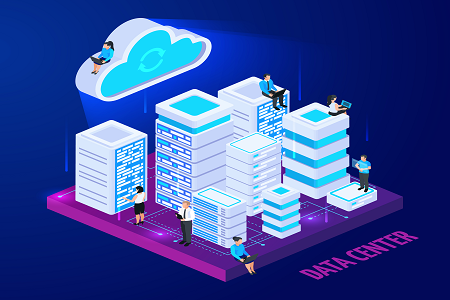Salient IT Services › Data backup solutions Davis
A quick guide to data backup in Davis
Data is what enables modern businesses to function, so it’s important to take care of it. With that in mind, here is a quick guide to data backup in Davis.
You need to define realistic RTOs and RPOs
Your recovery time objective and recovery point objectives define how quickly you need your data and how much data you are prepared to put at risk. Both are important but only one can be your main objective and for most SMBs, that’s probably time.
If you’re undertaking cloud data backups, then you may want to think about defining individual RTOs and RPOs for each type of data that you hold. You could then use these as the basis for a tiered-recovery strategy. This prioritizes the recovery of your most critical data so that users can get on with essential tasks and then moves on to less critical data. This can be a useful way to balance convenience with cost.
Regardless of your RTO and RPO cloud data backups are usually the right option
If you’re still running a data center then it may make sense to use physical storage for your local backup. Even in a data center, however, the cloud is generally the only sensible option for your off-site backup. Leaving aside the convenience, it’s probably much safer to transport your encrypted data over the internet than it is to transport physical devices to an off-site storage location and it’s certainly a lot quicker to bring it back.
If you’re already in the cloud, public or private, then cloud to cloud backups are really the only sensible option.
You need to have a process for dealing with data which becomes dormant
You should only backup data that you actively need. All other data belongs in an archive if you keep it at all. A lot of data, especially sensitive data, has a clear lifecycle. It starts off being active, production data. Then it becomes data that needs to be archived or deleted. If it needs to be archived, there then comes a point when it either must or can be deleted. All of these transitions need to be managed both for legal reasons (especially when dealing with sensitive data) and to minimize general costs.
If you continually backup data that belongs in an archive, then you are increasing your use of bandwidth and fast storage for no gain. If you keep data in an archive when you have ceased to need it (or at least want it) then you’ll increase your cold-storage costs without any gain. These are much lower than the cost of fast storage, but even so, over time these excess costs will add up.
In either case, if you hold onto data after a point where the law requires it to be deleted, then you open yourself up to legal and/or compliance action. This is particularly likely with sensitive data.
It’s important to think how your data backups will fit into your disaster-recovery plans
If you’re already in the public cloud, then backing up to a second public cloud not only keeps your data protected from issues with your main public cloud but also lays the foundations for a convenient and cost-effective disaster-recovery solution. You just need to add the tools needed to use the data (such as an operating system and applications).

If you’re in a data center, then presumably you can’t, or don’t want to, use the cloud, which means that your disaster-recovery solution will need to be another data center, however, you can still use the public cloud as a convenient place to store your off-site data backups and hence use the internet as a convenient way to transfer your data from one location to another.
If you’re in a private cloud, then your disaster-recovery option will presumably be a second private cloud. This gives you two obvious options. Your first option is to link both private clouds with a public cloud and store your data backups in the public cloud. This is usually acceptable provided that the data is encrypted in one of the private clouds and is kept encrypted until it is either back on the private servers or deleted. Your second option is to use your disaster-recovery cloud to store your data backups.
Storing data in the public cloud is generally more cost-effective, but keeping your data backups ready in your private cloud can allow you to get up and running more quickly if you need to active your disaster-recovery plan.
If you’d like to speak to a reputable and experienced data backup solutions provider in Davis, please click here now to contact Salient IT.


 (3 votes, average: 3.67 out of 5)
(3 votes, average: 3.67 out of 5)
